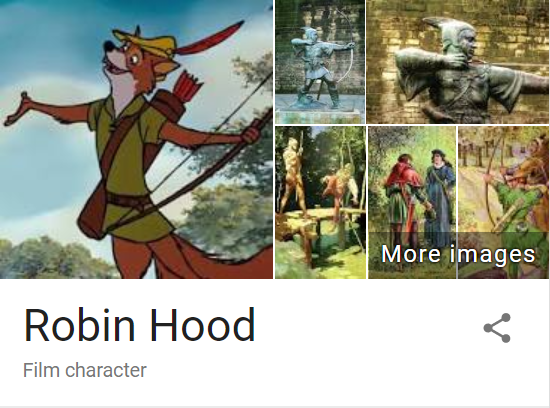The Middle Ages are as popular as ever and, as such, we need continuous scholarship on medievalism, especially in movies and television.
Case in point, consider Lee Ann Tobin’s research in 1990, surveying students on their familiarity with medieval films. ((Tobin’s entire article is worth reading, as they explore the use of medieval film as a teaching tool. Lee Ann Tobin, “Contemporary Medievalism as a Teaching Tool,” Studies in Medieval and Renaissance Teaching 1, no. 2 (1990): 13-19.))
The results are a fascinating time capsule.
82% of them had seen Robin Hood – That’s the 1973 Disney animated film, not the Kevin Costner Prince of Thieves (1991) that didn’t come out until a year after Tobin’s publication. And it obviously wasn’t the 2010 Ridley Scott epic, starring Russell Crowe.
My initial thought is that if we asked a group of students under the age of 30 to name a Robin Hood film, would most of them even recall the 1973 film?
Of course, when you search “Robin Hood,” you get the animated fox in Google’s Knowledge Graph. But that doesn’t mean that 82% of students today have seen that 45-year-old film.

Back to Tobin’s study,
75% of the surveyed students had seen Monty Python and the Holy Grail (1975), an obvious classic! I lament that 100% of the world hasn’t seen this movie, but I’d be happily surprised if 75% of students today have seen it.
At least 50% had seen Excalibur (1981). I know of a 31-year-old self-proclaimed film buff who just saw it for the first time last month.
Also scoring higher than 50% were Camelot (1967), The Princess Bride (1987), and Dragonslayer (1981). Sadly, my own informal surveys have demonstrated that finding millennials who have seen any of these, including ‘Princess Bride is a tall order.
This isn’t meant to decry younger generations and their need to stay up on medieval “classics” (seriously, Excalibur is an acquired taste at best). Instead, it’s necessary to realize that this list of popular medieval films from 1990 is outdated. Most students will be familiar with the medievalesque worlds of Game of Thrones and Harry Potter well before they see any of these films from the 1980s and 70s.
As Meriem Pagès puts it plainly, “popular medievalism is demanding.” ((Meriem Pagès, “You Can’t Do This to Disney! Popular Medievalisms in the Classroom,” in Medieval Afterlives in Contemporary Culture, ed. Gail Ashton (London: Bloomsbury, 2015), 65.)) Thus, a more seasoned professor may not be familiar with all the medievalisms students experienced throughout their childhood, especially via other mediums such as television and games. And while all the medievalism scholarship on movies such as Excalibur or First Knight (1995) or King Arthur (2004) is still great, we need continuous efforts by academics to address the other medieval worlds popular in the public.
Luckily, there is!
I’m maintaining an ever-growing annotated bibliography for medievalism on screen. Work in this field over the past few decades has exploded. And while the work on Harry Potter medievalism is only includes a handful of entries at the time of this writing, there is a lot of recent work on the medievalism in Game of Thrones and Lord of the Rings.
